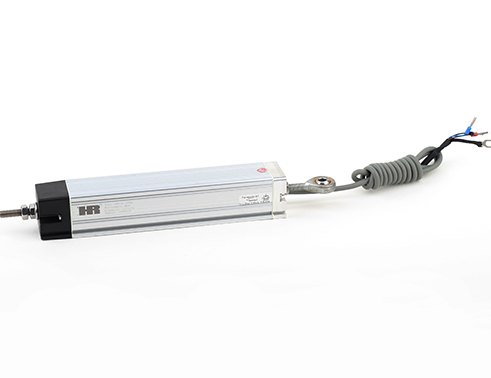
Company name: zhejiang huiren electronics co., LTD
Contact person: ms xu
Telephone: 0572-2207633
Phone: 18072606105
Email address: hrsales1@hzhuiren.com
Website: www.hzhuiren.com
Address: 1818 gangnan road, economic and technological development zone, huzhou city, zhejiang province

1. Determine the type of sensor according to the measurement object and the measurement environment
In order to carry out a specific measurement, the principle of the sensor should be considered first, which needs to be determined after analyzing many factors. Because, even if the measurement of the same physical quantity, there are a variety of principles of the sensor to choose, which principle of the sensor is more appropriate, according to the characteristics of the measurement and the use of the sensor conditions to consider the following specific issues: the size of the range; The volume requirement of the sensor for the measured position; Measuring method is contact or non-contact; A method for deriving the signal, wired or non-contact measurement; The source of the sensor, the quality of the product, whether the investment is acceptable.
After considering the above problems, we can determine which type of sensor to choose, and then consider the specific performance indicators of the sensor.
2. Selection of sensitivity
Generally, within the linear range of the sensor, the higher the sensitivity of the sensor, the better. Because only when the sensitivity is high, the value of the output signal corresponding to the measured change is relatively large, which is conducive to signal processing. However, it should be noted that the sensitivity of the sensor is high, and external noise unrelated to the measurement is also easy to mix, which will also be amplified by the amplification system, affecting the measurement accuracy. Therefore, it is required that the sensor itself should have a high signal-to-noise ratio to minimize the interference from the outside.
The sensitivity of the sensor is directional. When the measurement is a single vector, and the direction of its higher requirements, should choose the other direction of the sensor sensitivity is small; If the measured is a multi-dimensional vector, the cross-sensitivity of the sensor is required to be as small as possible.
3. Stability
The ability of a sensor's performance to remain constant over time is called stability. In addition to the structure of the sensor itself, the main factor affecting the long-term stability of the sensor is the use environment of the sensor. Therefore, in order to make the sensor has good stability, the sensor must have a strong ability to adapt to the environment.
Before selecting a sensor, it is necessary to investigate its operating environment, and select the appropriate sensor according to the specific operating environment, or take appropriate measures to reduce the impact of the environment.
4. Linear range
The linear range of the sensor is the range in which the output is proportional to the input. Theoretically, the sensitivity remains constant within this range. The wider the linear range of the sensor is, the larger its range is, and the measurement accuracy can be guaranteed. When selecting a sensor, after the type of sensor is determined, the first thing to see if its range can meet the requirements.
But in fact, no sensor can guarantee absolute linearity, its linearity is also relative. When the required measurement accuracy is relatively low, in a certain range, the sensor with small nonlinear error can be regarded as linear, which will bring great convenience to the measurement.
5. Frequency response characteristics
The frequency response characteristic of the sensor determines the frequency range to be measured, and the measurement condition must be kept true within the allowable frequency range. In fact, there is always a certain delay in the response of the sensor, and the shorter the delay time, the better.
Due to the high frequency response of the sensor, the frequency range of the measurable signal is wide. Due to the influence of the structural characteristics, the inertia of the mechanical system is large, because the frequency of the measurable signal of the sensor with low frequency is low.
In dynamic measurement, the frequency response characteristics of the required sensor should be determined according to the characteristics of the signal (steady-state, transient, random, etc.) to avoid excessive errors.
6, precision,
Precision is an important performance index of sensor, which is related to the whole measuring system. The higher the precision of the sensor, the more expensive its price is. Therefore, as long as the precision of the sensor meets the accuracy requirements of the whole measurement system, it is ok. In this way, the cheaper and simpler sensor can be selected among many sensors that meet the same measuring purpose.
If the purpose of measurement is qualitative analysis, it is ok to choose the sensor with high repeat precision, rather than the one with high absolute value precision. If it is for quantitative analysis, the accurate measurement value must be obtained, then the sensor with the accuracy level meeting the requirements should be selected.
For some special applications, it is necessary to design and manufacture the sensor if the suitable linear displacement sensor cannot be selected. The performance of the self-made sensor should meet the application requirements.